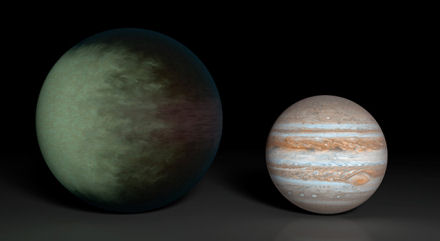
Astronomers have announced that the star Gliese 667C in the constellation of Scorpius is likely orbited by between five and seven planets and three of those may be habitable. The planets are in the so-called “Goldilocks” zone around the star, where liquid water could exist.
Only 22 light years distant, Gliese 667C is about one third of the mass of our Sun and is part of a triple star system known as Gliese 667. Previous studies of Gliese 667C suggested that the star hosted three planets, with one in the habitable zone. Now, a team of astronomers, led by Guillem Anglada-Escudé of the University of Göttingen, say they have found evidence for five, and possibly as many as seven, planets around the star.
“We identified three strong signals in the star before, but it was possible that smaller planets were hidden in the data,” said Anglada-Escudé. “We re-examined the existing data, added some new observations, and applied two different data analysis methods especially designed to deal with multi-planet signal detection. Both methods yielded the same answer: there are five very secure signals and up to seven low-mass planets in short-period orbits around the star.”
Three of these planets are confirmed to be super-Earths – planets more massive than Earth, but less massive than giant planets like Uranus or Neptune – which are within the star’s habitable zone. This is the first time that three such planets have been spotted orbiting in this zone in the same system.
This discovery hints that low-mass stars may be the best targets for searching for potentially habitable planets, an important finding given that around 80 percent of the stars in our Milky Way galaxy fall into this lower mass bracket. If such systems are common around low-mass stars, the number of potentially habitable planets in our galaxy could be much larger than previously expected.
Related:
Discuss this article in our forum
Earth-like planets may be closer than previously thought
First discovery of ET life will likely be around a white dwarf star, say astrophysicists
New technique for finding distant planets makes its first discovery
Earth’s Milky Way neighborhood gets upsized


















Comments are closed.